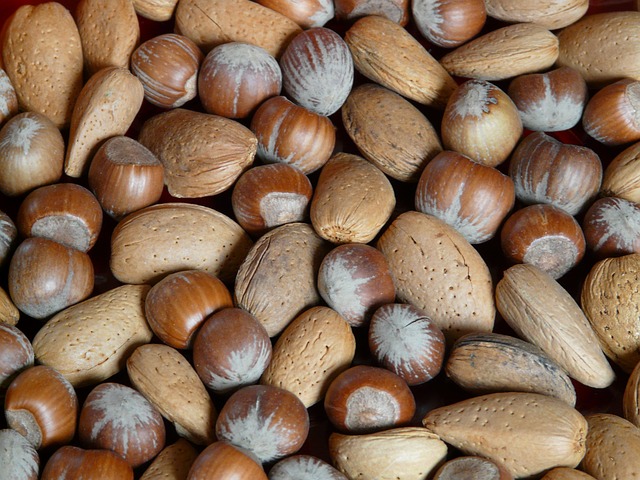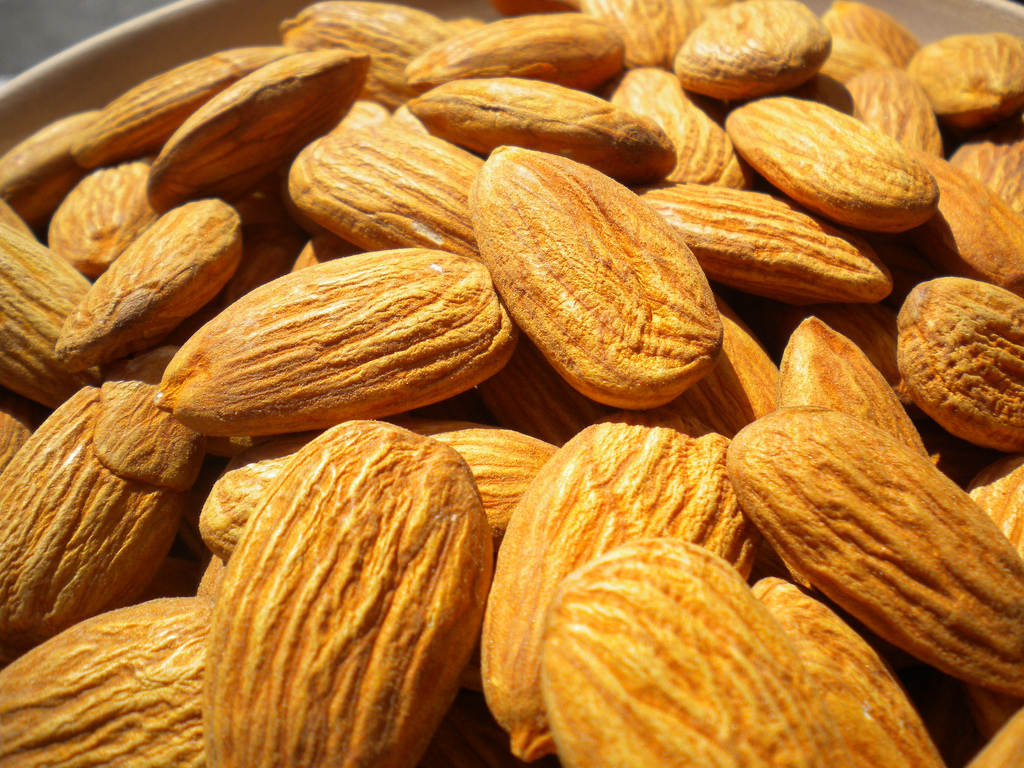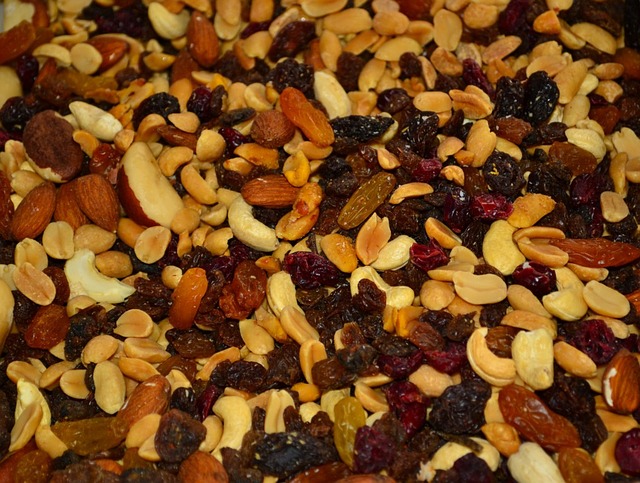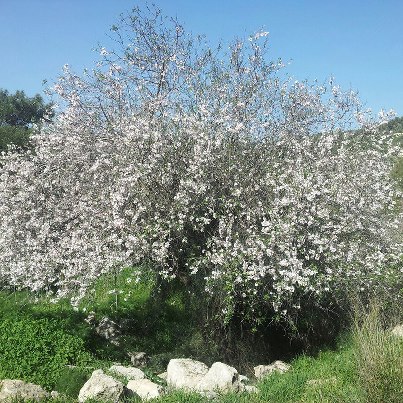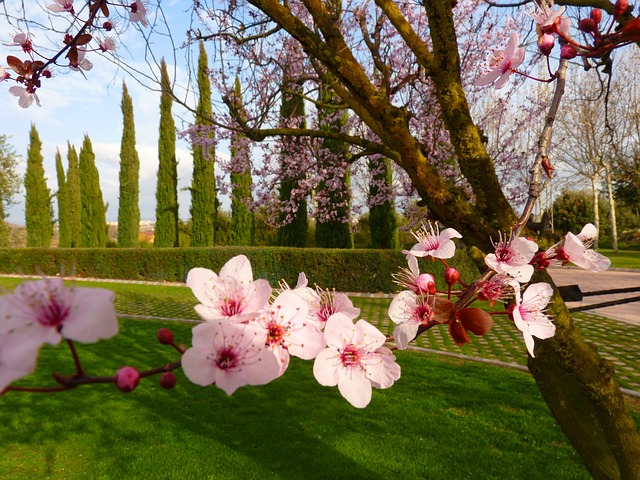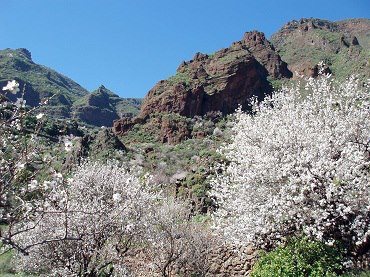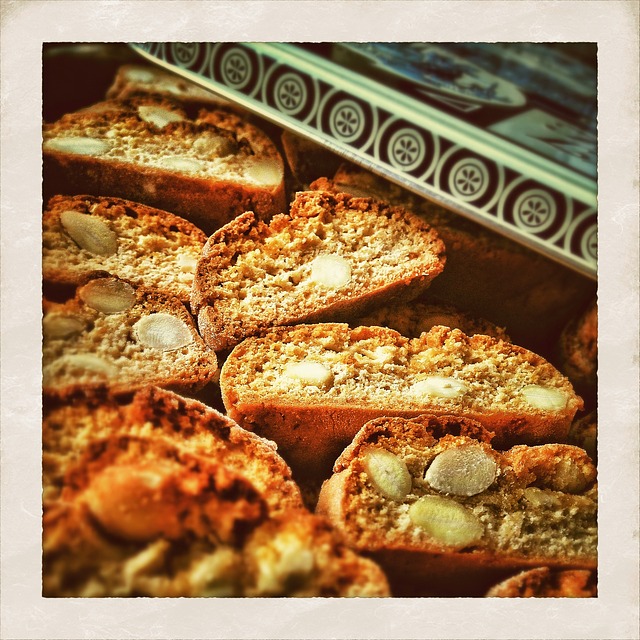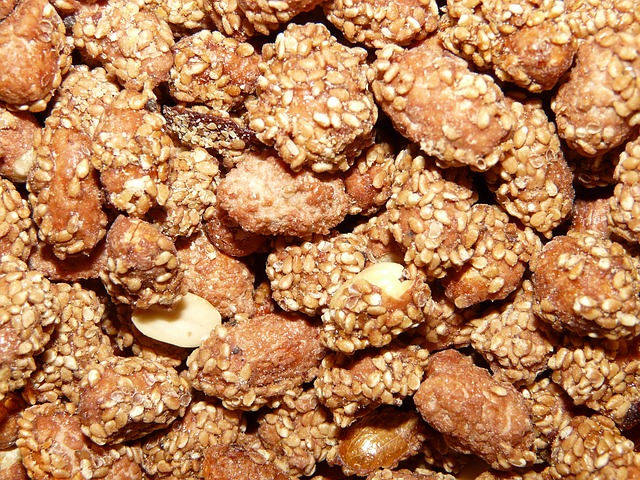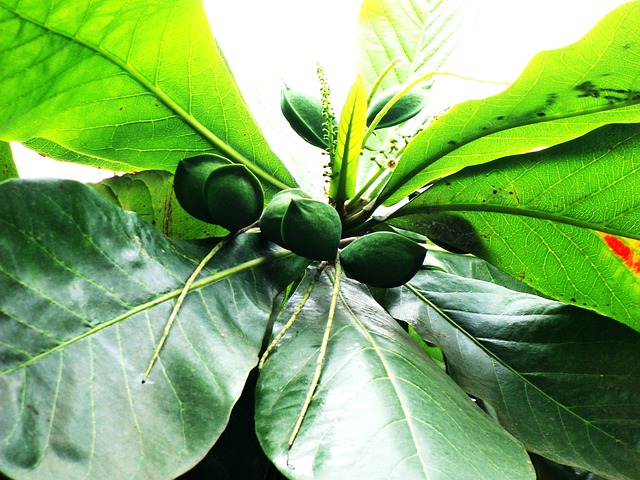Almond is also known as temperate nut
[Syn. P. communis (L.) Arcang.; Amygdalus communis L.]
Family – Rosaceae
Botany – A tree of Eastern Mediterranean region.
-
i) edible seeds
ii) seed oil, both from sweet and bitter varieties, is used in perfumery.
iii) almond nuts have an excellent amount of Vitamin E. Vitamin is necessary for our skin and it is a good source of antioxidant.
Also almond nuts helps to keep our bowel habit good because it has fiber.
It is enriched unsaturated fatty acids which is necessary to keep LDL and HDL low.
iv) Almond oil used as Skin emollient, Aromatic therapy.
v) Almond milk and Almond butter are commercially available and both are very good for health
-
Habitat – Almond can grow from 750 to 3,210m above mean sea level. It is too much temperature sensitive. The most critical stages are tender phase in blossoming and development of young fruits shortly after dropping of the husk. Blossoms can withstand temperature up to -2.20 30C for short time, but it is damaged if this temperature continues for many hours. Blossoms with petals exposed but not yet opened are known to withstand temperature up to -2.2 0C. Blossoms at petal fall stage get damaged at 0.5 0 to -1.10C.
As it requires a very exacting climate conditions, even in well-recognized areas of almond certain sites are well adapted. Along with this while planning for its cultivation, it should be taken into consideration that damage to blossom due to early spring frosts is a major constraint.
However, the productivity and quality can be improved by:
i) recognizing congenial site with proper soil and air drainage,
ii) proper irrigation,
iii) pruning,
iv) cultural practices,
v) identification of blooming and late blooming types with respect to spring and introduction of late blooming varieties.
Propagation –
Orchards of seedling origin attain giant size which makes orchard management difficult. Vegetatively propagated plants start bearing after 3 – 4 years.
Cultivation –
• Vegetatively propagated seedlings to be planted in a square or hexagonal system at spacing of 5.4 to 7.5m.
• Plant the every third row with a pollinizer variety, provided that its blooming time coincides with that of the main variety.
• Place 5 – 8 bee hives in the orchard at the time of commencement of blooming for efficient pollination.
Always consult your local agro-professional for a better return from your land under almond orchard
Photos of Almond Tree and Nuts

